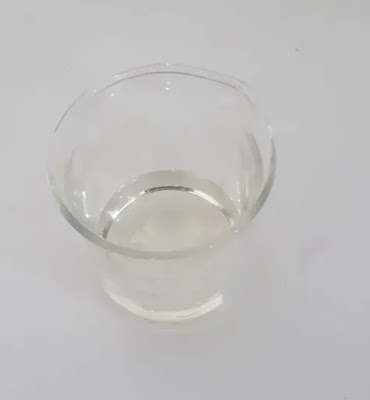Contents
hide
CHEMICAL PRODUCT IDENTIFICATION
- Product Namely: Hydrochloric Acid. 06 M – 12 M (Concentrated)
- Signal Sign: DANGER!
- Thorough HCl SDS – Safe handling with Safety info!
HAZARDS IDENTIFICATION
- It damages the skin & eyes, corrosion, or inflammation.
- It damages & burns the skin and eyes severely.
- Do not inhale spray, fumes, or mist.
- It is harmful if ingested or breathed in.
- Avoid eating, drinking, & smoking while utilizing this product.
- Metals may be corroded by it.
- IARC has classified industrial exposure to hydrochloric acid fumes and mists as a known carcinogen to humans.
COMPOSITION, INFORMATION ON INGREDIENTS
| Name of Component | CAS Number | Formula | Formula Weight | Concentration |
|---|---|---|---|---|
| Hydrochloric acid | 7647-01-0 | HCl | 36.458 g/mol | 20-38% |
| Water | 7732-18-5 | H2O | 18.01528 g/mol | 62-80% |
FIRST-AID MEASURES
- If you feel unwell, contact a doctor.
- If inhaled: Remove the victim to fresh air & keep them at rest in a breathing-friendly position.
- If in the eyes: Carefully rinse for a few minutes(20 minutes) with water. If contact lenses are present & simply possible to remove, do so. Rinsing continues.
- If on hair & skin: Remove any contaminated garments right away. Wash your skin with water.
- Before reusing, wash any compromised clothing.
- If swallowed: first clean your mouth & go to the doctor.
- Don’t induce vomiting.
FIRE-FIGHTING MEASURES
- It is non-flameable & non combustible sol.
- Use carbon dioxide, foam, dry chemicals, or water in case of fire.
- Decomposition when heated can release poisonous gases.
ACCIDENTAL RELEASE MEASURES
- Ventilate the area.
- Use sand or another inert absorbent material to confine the spill, neutralize it with calcium hydroxide or sodium bicarbonate, and then deposit the spilled item in a sealed bag or container.
- To prevent any kind of material damage, soak up spills.
 |
| Hydrochloric Acid (HCl) |
HANDLING & STORAGE
- Except for nitric acid, store with acids.
- Keep far from any water source in an acid-specific cabinet.
- Only keep it in the original container.
- Keep the container firmly shut.
- Use only in well-ventilated areas or under a hood.
EXPOSURE CONTROLS, PERSONAL PROTECTION
- Wear safety gear, including gloves, clothes, & eye protection.
- After handling, carefully wash your hands.
- Use only in well-ventilated areas or under a hood.
- Recommendations for exposure (as concentrated HCl) OSHA’s ceiling is 5 ppm, ACGIH’s is 2 ppm, and IDLH is 50 ppm.
- Any irritation is an indication of exposure because the irritation threshold is 5 ppm (per OSHA).
PHYSICAL & CHEMICAL PROPERTIES
- Appearance: It is a fuming liquid, and seems colorless to pale yellow.
- Odor: It has a pungent smell.
- pH: pH: < 1.
- Solubility: It is soluble in alcohol & water.
STABILITY & REACTIVITY
- Avoid coming into contact with metals, metal oxides, hydroxides, amines, bases, as well as other highly oxidizing substances.
- Incompatible with formaldehyde, cyanides, and sulfides.
- Metal, notably steel, is corroded.
- When diluted with water, produces heat.
- Satisfactory shelf life if properly stored.
TOXICOLOGICAL INFORMATION
- Acute effects: skin & eye deterioration inflammation of the respiratory tract, coughing, and throat & nose ulceration.
- Chronic effects: It is damaging to teeth.
- Target organs: It is damaging to teeth, skin, eyes, and the respiratory system.
- LD50 ORL-RBT: 900 mg/kg.
- LC50 for IHL-RAT: 3124 ppm/hour.
- LD50 for SKN-RBT: N/A.
ECOLOGICAL INFORMATION
- Possibly hazardous to aquatic life and doesn’t biodegrade in soil.
DISPOSAL CONSIDERATIONS
- Dispose of in accordance with local, state, & federal rules or laws.
TRANSPORT INFORMATION
- Hydrochloric acid is its shipping name. Corrosive, 8th-class hazard. UN1789 is the UN number.
REGULATORY INFORMATION
- RCRA code D002, TSCA listing, EINECS listing (231-595-7).
OTHER INFORMATION
This HCl SDS is intended as a piece of advice & is based on data & tests that are likely to be reliable. I don’t guarantee the data’s correctness or completeness & I’m not responsible for any resulting losses. The information is only being provided for your review, research, & verification. I DO NOT ASSUME RESPONSIBILITY AND EXPRESSLY DISCLAIM LIABILITY FOR LOSS, DAMAGE, OR EXPENSE RESULTING FROM OR IN ANY WAY CONNECTED WITH THE HANDLING, STORAGE, USE, OR DISPOSAL OF THIS PRODUCT FOR THE FOREGOING AND OTHER REASONS.
Click This: For Sigma-Aldrich SDS
|
|
| Hydrochloric Acid |
CONCLUSION
Kindly follow HCl SDS, because it is so dangerous & intensely corrosive acid, hydrochloric acid or HCl must be handled & stored with extreme care. Burns, lung problems, and eye damage are just a few of the major health risks that access to the chemical may bring about. When handling hydrochloric acid (HCl), it’s crucial to wear personal protection equipment or gear (PPE) such as gloves( specific for acid handling), goggles, as well as a respirator.
To reduce exposure to the chemical, suitable ventilation & engineering safeguards should also be in place. It’s crucial to store HCl or hydrochloric acid safely, away from incompatible materials, in a place that’s cool, dry, and well-ventilated. In the event of exposure, it’s crucial to get medical help right away. To guarantee the safe handling & use of hydrochloric acid or HCl, it is vital to follow the safety measures indicated in this HCl SDS (Safety Data Sheet), also to consult the relevant rules & guidelines.


1 thought on “HCl SDS: Top Safety Info”